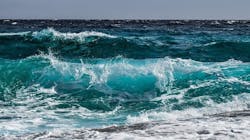Ohio State University researchers created maps with locations around the globe where groundwater meets oceans. According to Newswise, this map is the first of its kind, “giving important data points to communities and conservationists to help protect both drinking water and the seas.”
A “Geophysical Research Letters” study stated nearly half of fresh submarine groundwater discharge flows into the ocean near the tropics. According to Newswise, the study also found that “regions near active fault lines send greater volumes of groundwater into the ocean than regions that are tectonically stable.” Researchers also discovered that dry, arid regions have little groundwater discharge, opening limited groundwater supplies to saltwater intrusion.
The research team worked with researchers at NASA’s Jet Propulsion Laboratory and the University of Saskatchewan to use climate models and satellite images to show “ the flow of groundwater around the world’s coasts,” according to Newswise. The findings could better help coastal communities manage drinking water resources.
“Freshwater-groundwater discharge is a natural line of defense against saltwater intrusion,” said Audrey Sawyer, assistant professor of earth sciences at Ohio State University and co-author of the study, according to Newswise. “And saltwater intrusion is a concern in places like Miami, Georgia, Cape Cod—it’s up and down the coast. It’s a problem that dry regions have as little groundwater discharge as they do because these are also the places where people are going to tend to look for groundwater to meet their freshwater needs.”
The research may give scientists a better idea for how to monitor groundwater discharge. This type of monitoring is more challenging than monitoring water quality of a river or stream because groundwater enters oceans and lakes underwater, where it is not visible.
“If you’ve ever been swimming in a lake or in the ocean in the summertime and you go through a cold patch, that is probably a place where groundwater is coming out,” Sawyer said, according to Newswise. “And that’s just one way that groundwater affects surface water—in that case, it’s affecting temperature, but it also affects the chemistry of the water. These effects can be hard to measure over large scales.”


